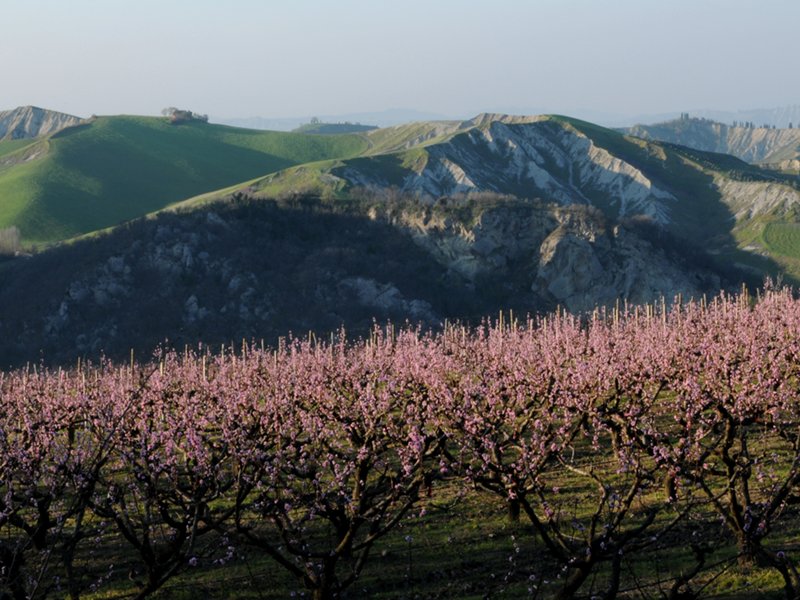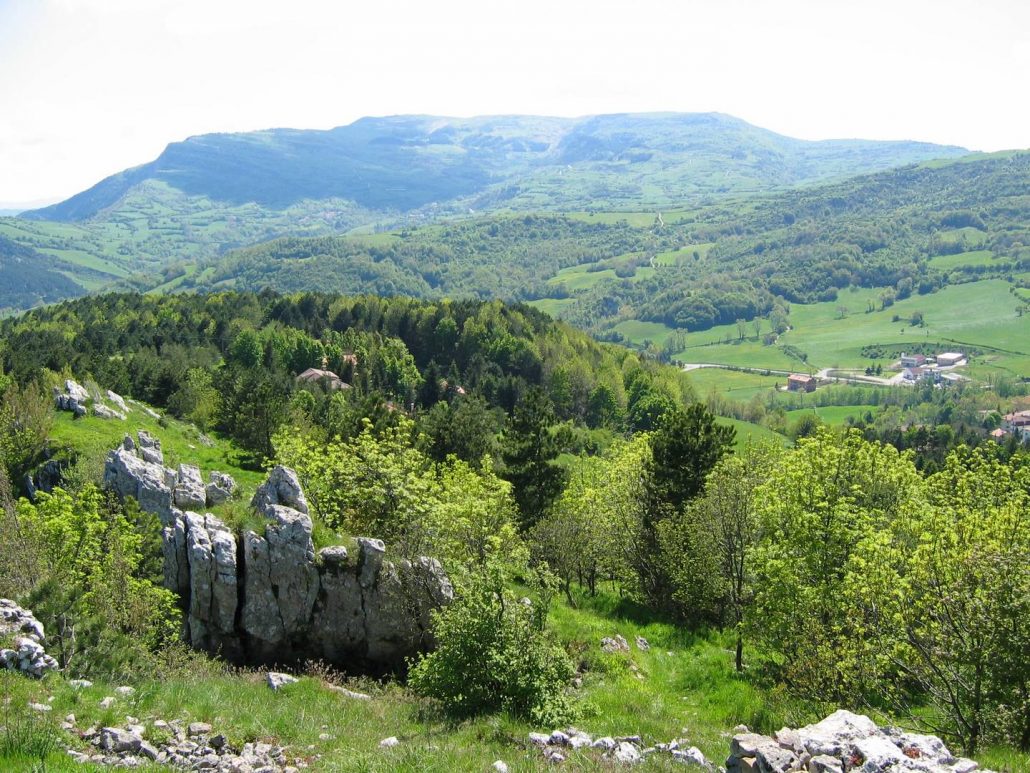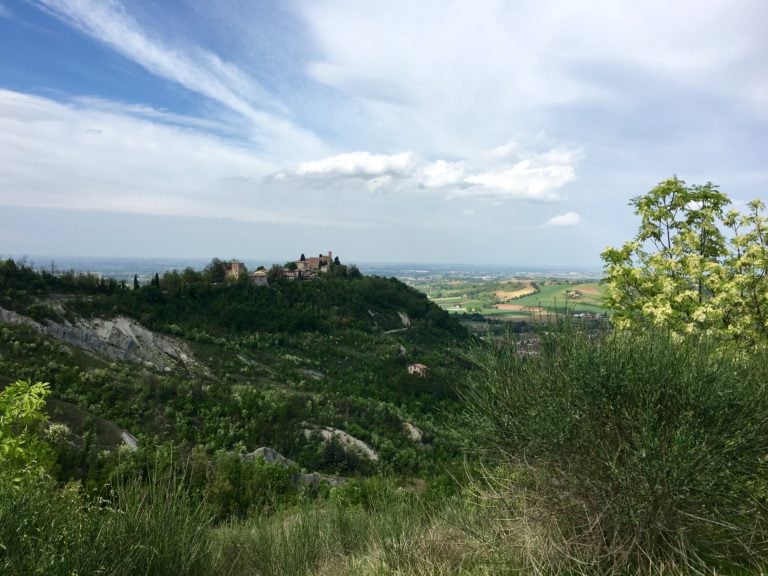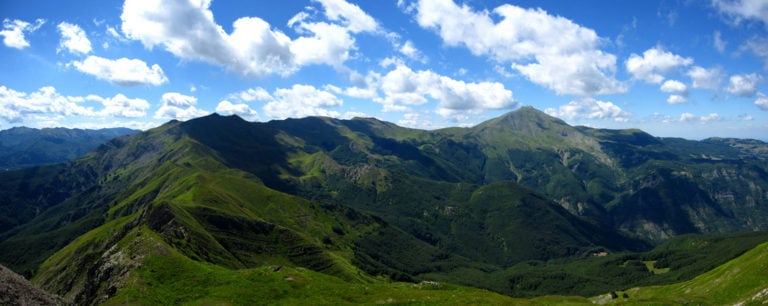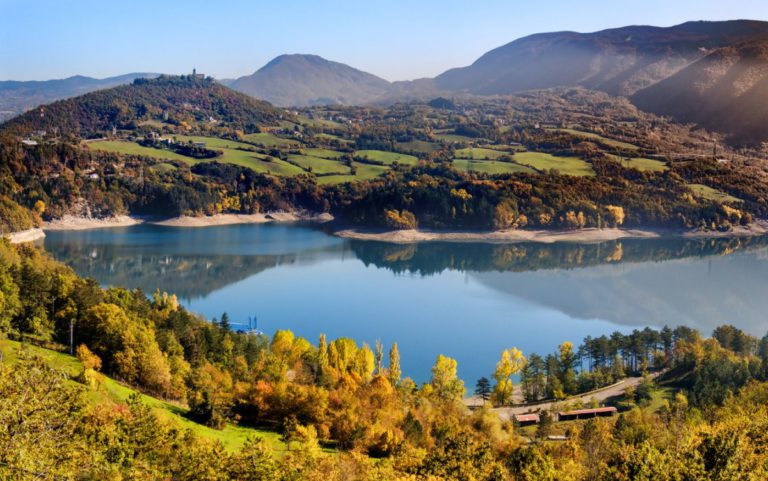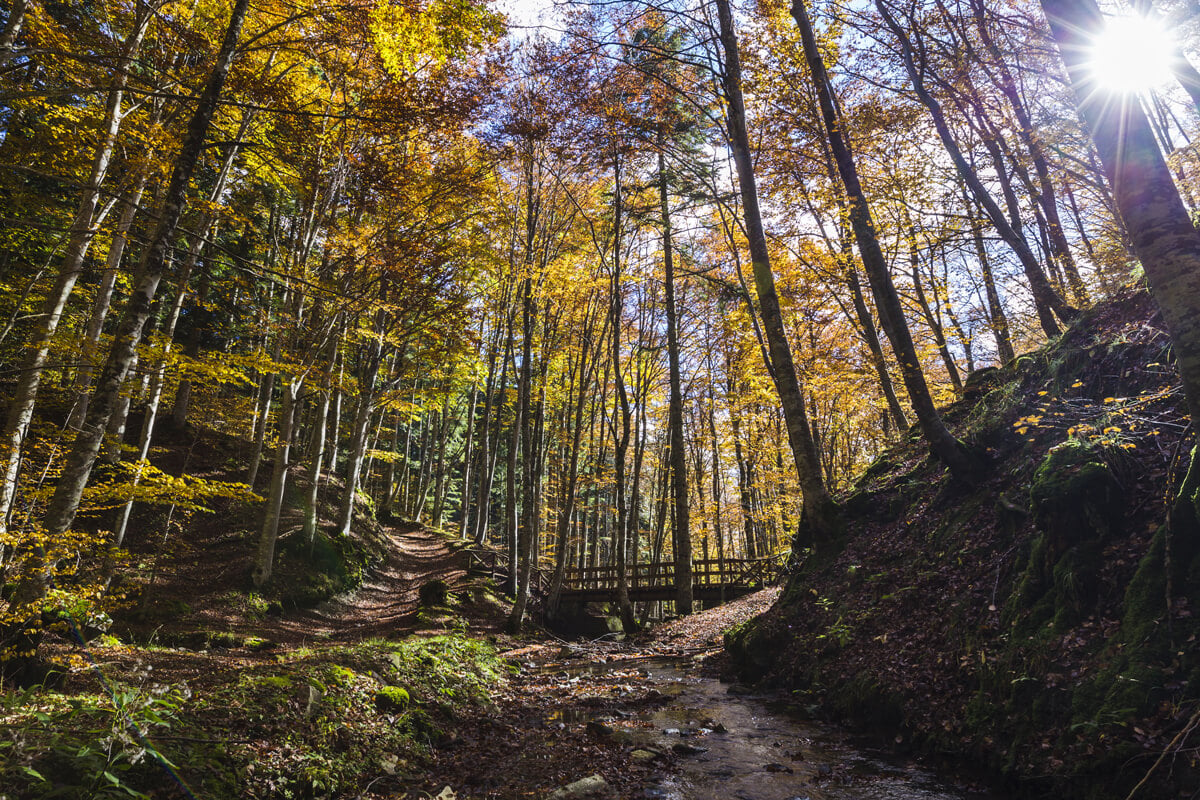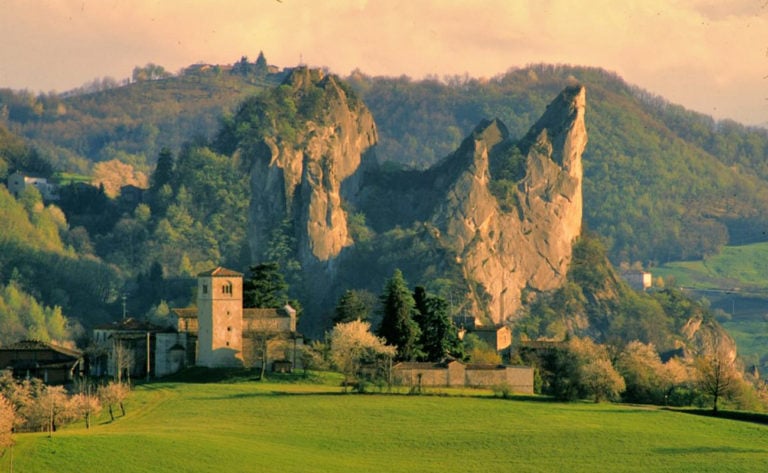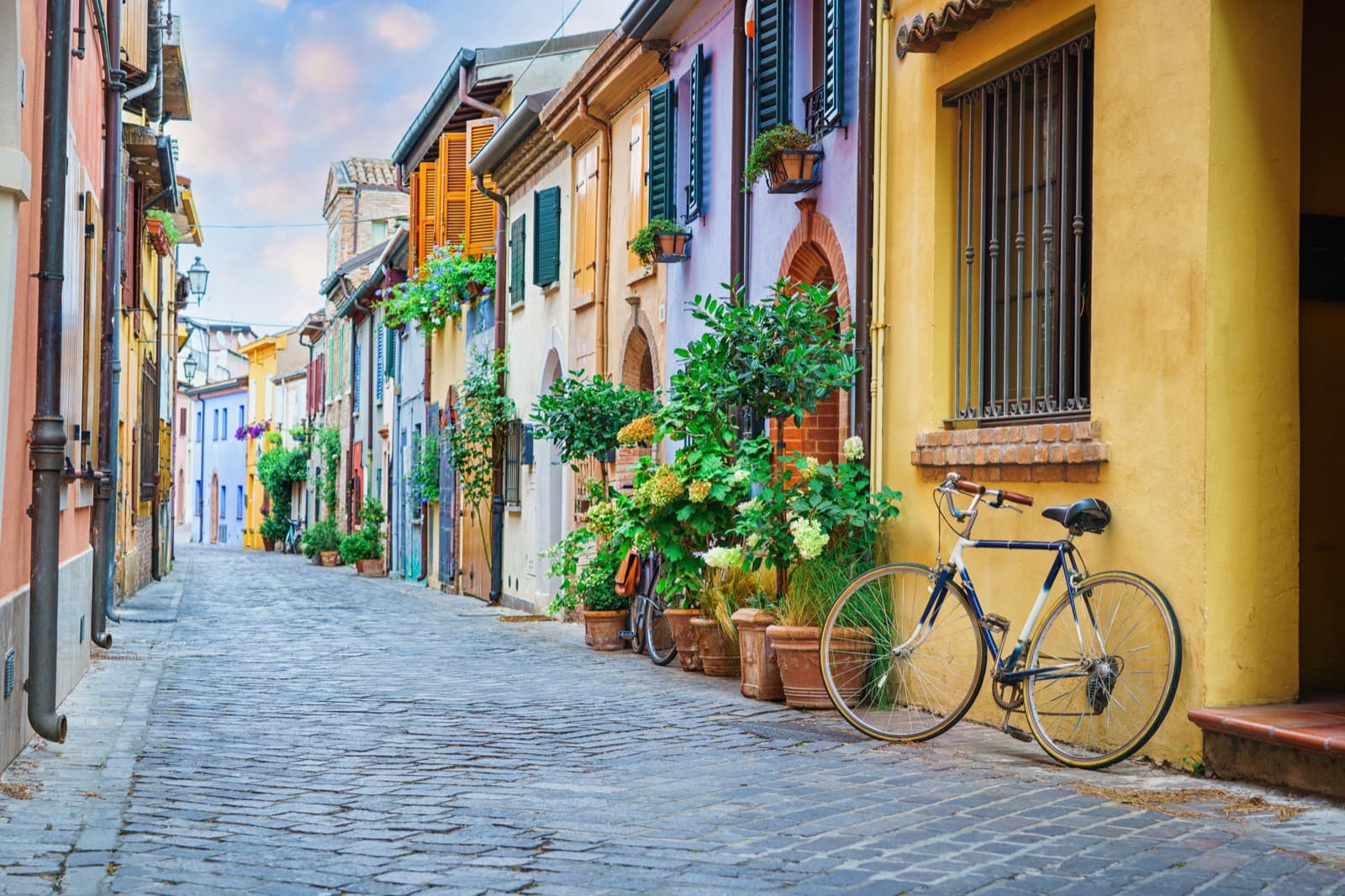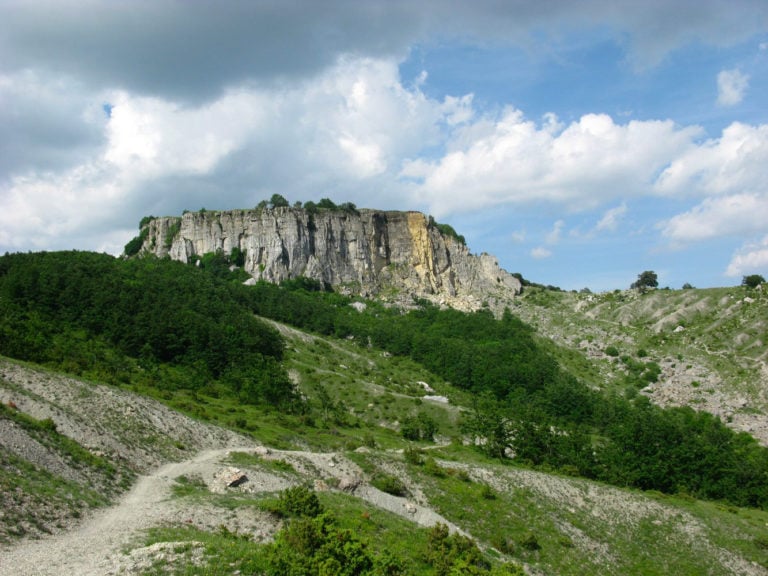After the Tuscan-Emilian Apennine Park, the Casentino Forest, the Po Delta, the parks around Bologna and in the Emilia area, we end our section dedicated to the protected areas of Emilia-Romagna with the 2 regional parks included in the Romagna area.
Parco della Vena del Gesso Romagnola
The Apennines in the western part of Romagna, from the Sillaro valley to Brisighella in the Lamone valley, are crossed, about ten kilometers from the line of conjunction with the plain, by a spectacular gray-silvery ridge suddenly interrupting the gentle silhouette of the local hills, giving a unique landscape.
The gypsum outcrop of the Vena del Gesso Romagnola, the longest and most imposing in Italy, develops for 25 km and has an average width of one kilometer and a half, characterizing the area with peculiar karst morphologies including dolines, steephead valleys and several caves, including the legendary Grotta del Re Tiberio.
Among the points of interest, the Riva di San Biagio is the longest gypsum rampart: it runs uninterrupted for over 5 km, from Borgo Rivola to Tossignano; to discover it, take the panoramic Strada della Lavanda (Lavender Route), which connects the Senio valley, just before Casola Valsenio, with the Santerno valley, near Fontanelice.
The Park is crossed by numerous itineraries, including two cycle paths and 4 stages of the Alta Via dei Parchi (14th, 15th, 16th & 17th), which lead from the Alpe di Monghidoro to Marradi.
Blooming apricots Ph. Max Costa, via parchiromagna.it
Parco Sasso Simone e Simoncello
In the heart of the Montefeltro, on the border between the provinces of Rimini and Pesaro-Urbino, it stands a park characterized by a peculiar panorama: it’s the Sasso Simone and Simoncello Park, composed by calcareous outcrops that form the main peaks, and outcrops with a clayey component that give a gentle hilly landscape. This juxtaposition produces an extreme diversified vegetation: the area around the two Sassi, clayey, is occupied by a forest of Turkey oaks, while on Carpegna Mount and on the east of Sasso Simone there are hazelnut and maple woods that in autumn take the most varied shades of green and red; the high parts of Carpegna Mount host pasture meadows that in late spring are covered with the colors of numerous species of orchids.
But the park also hides a curious historical side: inside it the City of Sasso was built, a city-fortress built with late-Renaissance urban planning criteria, consisting of 50 houses of equal size and connected to nearby castles and to Florence. When climate worsening made life at such high altitudes almost impossible, the strategic-military idea was abandoned and the city emptied.
Inside the protected area there are also the Naturalistic Museum of Pennabilli and the Wildlife Park of Pian dei Prati, which allows you to get to know domestic animals, such as goats and mules, and wild animals kept free, like roe deers and wild boars.
The Park can be explored through 8 trekking itineraries and 5 itineraries for horse riding or mountain biking. The ridge of the park is also crossed by the last two stages of the Alta Via dei Parchi, the 26th and the 27th, which lead from Monte Fumaiolo to the Hermitage of Madonna del Faggio.
Ph. via parcosimone.it
Author

Elisa Mazzini
Social Media Manager for @inEmiliaRomagna and full-time mom.
You may also like

Interested in our newsletter?
Every first of the month, an email (in Italian) with selected contents and upcoming events.
5 hikes to discover the Casentinesi Forests on foot
by Elisa Mazzini /// October 19, 2020
5 natural spots to discover in Emilia-Romagna
by Elisa Mazzini /// September 19, 2016
by Elisa Mazzini ///
